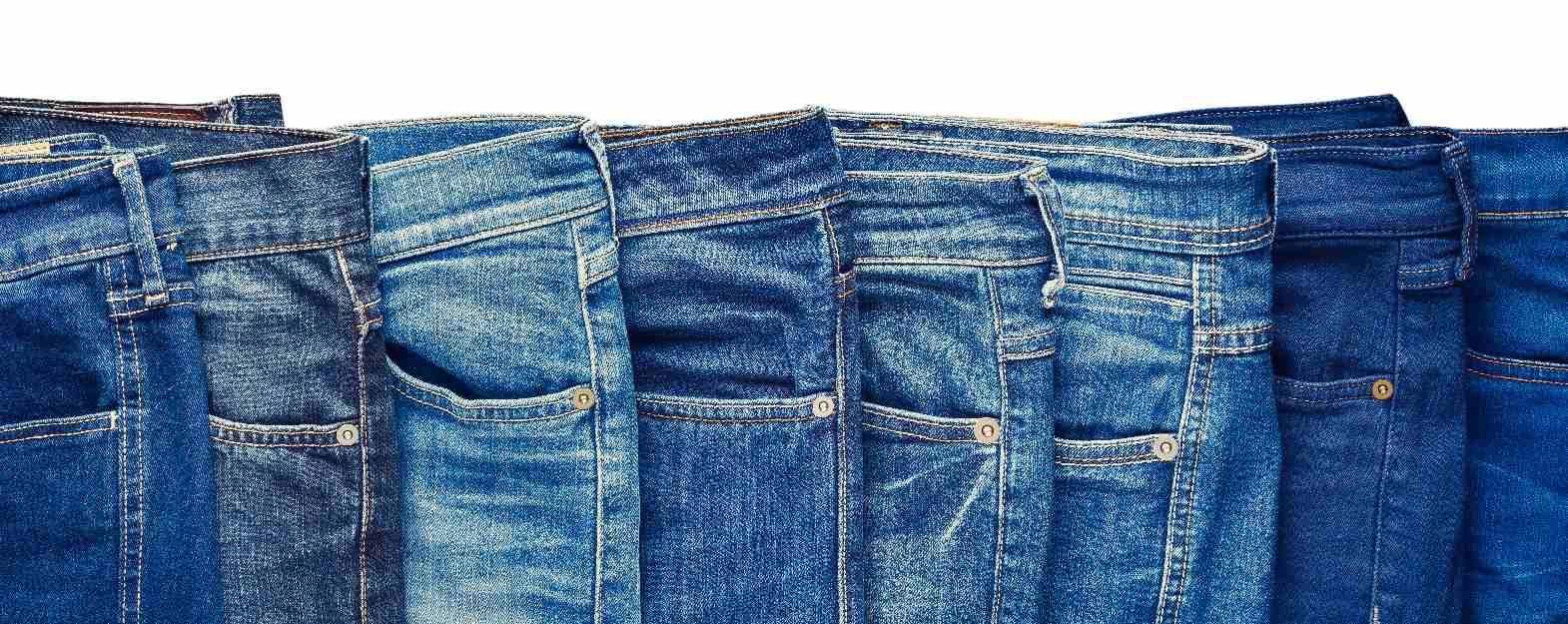The major focus areas of innovation and development are comfort, performance, and environmental friendliness of different processes. Comfort and fit are very important aspects of denim garments. So, a lot of research has been done to make stretch denims. Elastane fibers are incorporated into the fabric. Lycra and Spandex are used in weft yarn. Ring and open-end core-spun yarns are also used in denim to provide stretch property. Elastic ply yarns produced on TFO are also used to make stretch denim fabrics. Apart from the multi-component, bi-component synthetic filament yarns are also used to provide stretch.
To improve performance, synthetic fibers blended with natural fibers are used. One such blend is a blend of Nylon 6.6 and cotton. This fabric shows the traditional look and feel but performance is better than the 100 per cent cotton denim in terms of better abrasion resistance. So, the durability of the fabric is more than the 100 per cent cotton denim. Other synthetic fibers such as polyester and polypropylene fibers are also used. For making softer denim fabrics, especially for women's wear, a blend of Cupro, Modal, Promodal, Tencel, and Rayon are being used. Bamboo fibers, hemp fibers, and their blends are being used to make denim fabrics.
To impart fancy effects, different kinds of fancy yarns are being used. Examples of such yarn are slub yarn and multi-count yarn. The slub can vary in terms of thickness, length, and twist. Such yarns can be manufactured on ring spinning and OE spinning machines by attaching a special attachment. One such attachment is Amsler control. Such fabrics give a very unique effect after washing treatment.
Two methods of warping are practiced. These are ball warping and direct warping. Dyeing of warp yarns is done either by rope dyeing method or slasher dyeing method. Rope dyeing is considered better in many aspects such as higher production, long runs, better dry and wet fastness, and lot-to-lot shade consistency. Indigo dyes are generally used to dye warp yarns. In some cases, sulfur black and blue dye can also be applied before indigo dyeing to achieve darker shades. Sometimes, sulfur dyes are also applied after the yarn is indigo-dyed.
A lot of research is taking place to develop dyeing processes that produce a low impact on the environment. Clariant has developed a range of low-sulfide dyestuffs and processes to obtain various indigo shades at a low dyeing cycle to reduce the consumption of water. DyStar has patented Indigo Vat 40 per cent solution. It offers various shades of blue and claims a 60-70 per cent reduction in the consumption of Sodium hydrosulphite.
Desizing of fabrics is done after weaving. This process can be done by acid desizing method and oxidative desizing method. But these processes are associated with a number of disadvantages. To overcome this, enzymatic desizing is preferred. Alpha- amylase is used as desizing agent. Enzymatic process are more eco-friendly than chemical methods.
Washing of denim garments is one of the most important processes. This process adds a lot of value to the final garment. In the washing process, fading effect is imparted to the denim products. There are many methods to impart faded effects. The traditionally washing is done using any of the methods or combinations such as stone washing, washing with strong bleaching agents such as sodium hypochlorite, potassium per magnet. These processes are not environment friendly. Alternative methods have been developed. Cellulases enzymes are used in place of pumice stone to impart abraded effect.
Laccase based bleaching technique is developed. This enzyme only attacks indigo dyed yarn bit does affect nature of white weft yarn. It can also be used to bleach fabrics containing elastane filaments without losing stretch property. Laser based techniques are used to give faded effect. Further this technique can also be used to create motifs on the denim fabrics. Ozone base denim washing treatments have been developed. In this process, ozone gas is used as bleaching agent, which attacks indigo dyes and destroy to create faded look.
Functional finishes such as antibacterial finishes, UV- protection finishes are applied on denim fabrics to improve functional performances of denim fabrics. To enhance the durability of the finished fabric, nano encapsulation of the herbal extracts were performed and the results showed good resistance for microbes even after 30 industrial washes. The use of nano-clay is also reported to impart old look, soft handle, flame retardant and antibacterial properties to denim fabrics.
In conclusion, it is well accepted that denim is an evergreen fashion and liked by all irrespective of gender, age and profession. A lot of innovation and research are to be done on continuous basis to fulfill requirements of diverse consumers keeping in mind its impact on society and environment.
References:
1. Tarafder, Nemailal. Man-Made Textiles in India. Nov2008, Vol. 51 Issue 11, p387-795
2. Textile Magazine. May2013, Vol. 54 Issue 5, p48-52. 4p
3. Apparel. August 2014, Vol. 55 Issue 12, p32, 3 p
4. Indian Textile Journal. Nov 30, 2014
5. Indian Textile Journal. July 30, 2014
6. Indian Textile Journal. August 31, 2014
7. Darji, Alkesh. Melliand International. 2014, Vol. 20 Issue 1, p44-45. 2p.
8. Sumithra, M.; Raaja, N. V. Man-Made Textiles in India. Apr2012, Vol. 40 Issue 4, p131-134. 4p
9. www.fiber2fashion.com
10. Maryan, Ali Sadeghian; Montazer, Majid; Rashidi, Abousaid. Journal of Engineered Fabrics & Fibers (JEFF). 2013, Vol. 8 Issue 4, p68-77. 10p.
11. Sariisik, Merih. AATCC Review. Jan2004, Vol. 4 Issue 1, p24-29. 6p.
About the author
Mahesh Shaw is Assistant Professor at NIFT (Gandhinagar).







Comments